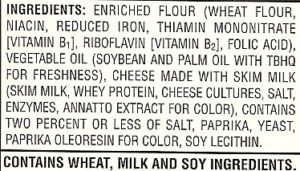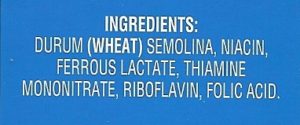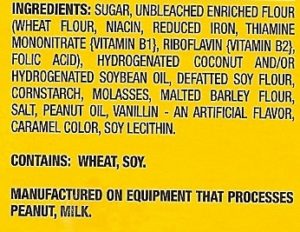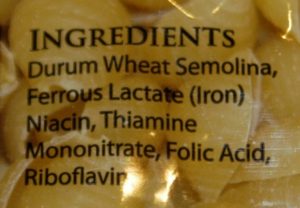Food Allergen Labeling and Consumer Protection Act (FALCPA)




Allergen labeling laws vary by country. In the United States, the U.S. Food and Drug Administration (FDA) regulates food allergen labeling for the majority of packaged foods. This labeling was defined by the Food Allergen Labeling and Consumer Protection Act of 2004.
The law requires the top eight food allergens be labeled using their common names. The top eight allergens are milk, eggs, fish, crustacean shellfish, tree nuts, peanuts, wheat, and soybeans. An example of common name usage is that instead of less familiar terms like casein, whey, lactose, dairy, or lactalbumin appearing on a label, the more common name, milk, will always be listed.
For fish and crustacean shellfish, the common species will be listed, such as bass, flounder, cod, crab, lobster or shrimp. For tree nuts, the specific types of nuts must be listed on the label using names FALCPA has designated. (List of FALCPA tree nut names)
There are several ways the common allergen ingredient names can be shown on the label. One method is for the name to be in a Contains statement at the end of the ingredient list. For example, the label may say, Contains Peanuts, after the ingredient section.
A second method is for the common name to be listed in parenthesis after the less common name. For example the label may say Durum (wheat), where wheat is the common allergen name required, and Durum is a less common name.
A third method is for the common name to just be listed as one of the ingredients. For example, if the ingredient label lists wheat, it does not have to be in a Contains section.
Some manufactures add an addition section with statements like May contain or Manufactured on equipment that processes These statements are not required by FALCPA, but are optionally provided by manufactures to provide more information to consumers.
There are some items the FDA does not regulate, but are regulated by other US government agencies like the United States Department of Agriculture (USDA) or Alcohol and Tobacco Tax and Trade Bureau (TTB). The items not covered by FDA and its labeling requirements are:
- Meat, poultry, and egg products.
- Foods that are placed in a wrapper, a carry-out box, or other container after being ordered by a consumer.
- Raw agricultural commodities (including fresh fruits and vegetables)
- Highly refined oils (Or ingredients derived from them)
- Alcoholic beverages, beer (malt beverages), wine, etc.
- Non food items like cosmetics, lotions, medications, and toiletries.
Remember to read the label each and every time before purchasing a product for consumption to check for allergens. Product ingredients can change over time; different sizes or types of packages may have different ingredients or may be made in different facilities with different manufacturing processes. As a reminder FALCPA regulates only the top eight allergens to be in plain language; allergens listed that are not on the top eight list are not required to be in plain language. For example; corn may be listed at dextrose. The word corn is not required yet many people have allergies to corn. If you have any question on the product, be safe, and dont eat it. You can also call the manufacture for more information.
To learn more about labeling, take our Food Allergen Labeling Online Course. Or test your knowledge with our short food allergen labeling quiz.
- What are the most common food allergies?
- Food allergy and food intolerance?
- Are food allergies increasing?
- What is anaphylaxis?
- Learn more about food allergen labeling
Category: Food-allergies
